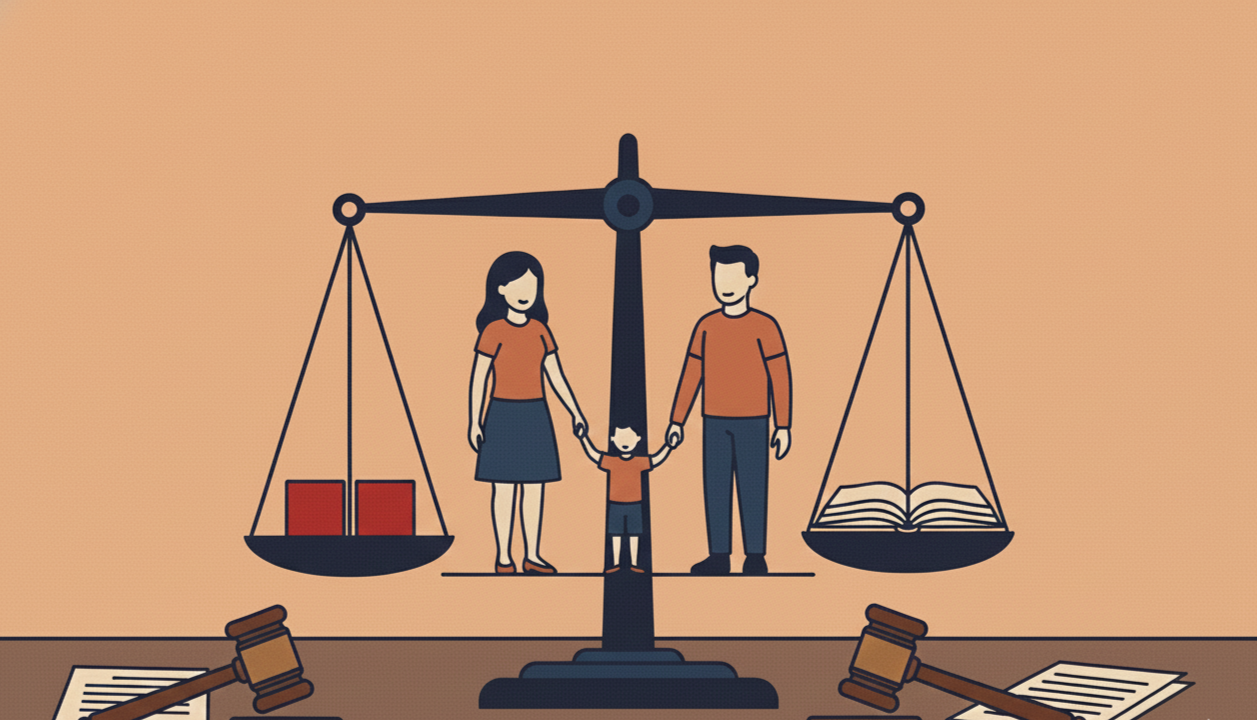The amount of child support depends on whether you have joint or primary physical custody, income, and number of children.

Child support is an essential part of ensuring the well-being of children whose parents are separated or divorced. In Nevada, child support is regulated by the Nevada Administrative Code (NAC), specifically NAC Chapter 425.
The NAC provides a formula for calculating child support based on the gross monthly income of each parent, the number of children involved, and the amount of time the noncustodial parent spends with the child. The amount of time spent with the child is referred to as physical custody and is either joint physical custody or primary physical custody (which is, that parent has over 60% of the time with their children).
Each parent has a child support obligation. If a parent has primary physical custody, the law assumes they are paying their child support because the child is living with them. The other parent, who only has visitation, must pay their full child support obligation to the parent with primary physical custody.
If the parties share joint physical custody, the parties subtract their child support obligation from the other, and the person who makes more money per month pays the other parent the difference in their obligations.
The table below is an oversimplification of how the amount of a parent’s gross monthly income in Nevada is calculated.
One Two
$ 6,000.00 16% $ 6,000.00 22%
$ 4,000.00 8% $ 4,000.00 11%
extra 4% extra 6%
Three Four
$ 6,000.00 26% $ 6,000.00 28%
$ 4,000.00 13% $ 4,000.00 14%
extra 6% extra 7%
Five Six
$ 6,000.00 2% $ 6,000.00 2%
$ 4,000.00 1% $ 4,000.00 1%
extra 0.5% extra 0.5%
If a parent has three children, 26% of the first $6,000 of their gross monthly income is set aside for child support. Then, 13% of the next $4,000 of their gross monthly income is set aside for child support. All money after this is set aside for child support at 6%. Assuming a parent has three children and makes $11,250 per month, his child support obligation would be $2,155.00 per month. (In case you’re wondering, for one child, it would be $1,330, for two it would be $1,835, for four it is $2,327.50, for five it is $2,493.75, for six it is $2,660.00).
We arrive at $11,250 by multiplying $6,000 by 0.26, which is $1,560. Then subtracting $6000 from $11,250, we still have $5250 left over. The next $4000 is multiplied by 0.13 for a total of $520. Then subtract that $4000 from the $5250, leaving us with $1250, which is multiplied by 0.06 for a total of $75. Add those amounts ($1,560.00 + $520.00 + $75.00) and you have the child support obligation of $2155.
If you have three children and make $3750 per month, the math is much easier. Simply multiply $3750 by 0.26 and your child support obligation is a total of $975 per month.
Let’s look at three scenarios. This will be on the Bar Exam.
Under Nevada law, child support is typically calculated based on the level of physical custody, the gross monthly income of the parents, and the number of children involved. In Scenario 1, the parents share joint physical custody, where they have two children, Father makes $25,000 per year, and Mother makes $130,000 per year. In Scenario 2, the parents share joint physical custody, Mother makes $45,000 per year, Father earns $50,000 per year, and they share six children between them. In Scenario 3, Mother has primary physical custody over the only child, Mother makes $145,000 per year, and Father makes $30,000 per year.
In Scenario 1, Mother’s child support payable each month is $1,351.67. This is because Father’s child support obligation is $458.33 and Mother’s is $1,810 and they share joint physical custody, so we subtract the two. If you’re following along but got a different number, you should remember we care about gross monthly income, not annual salaries.
In Scenario 2, Father owes Mother $133.33 in child support each month. His child support obligation is $1,333.33 and her child support obligation is $1,200. Because there are six children the correct percentage to take from the parents’ income is 32% (28% from four children per NAC Chapter 425 then two percentage points per extra child, so 4%, so add 28% and 4% for the 32% multiplier) (with five children it would be 30%, at 40 children it would be 100%, in case you were really that far down into this rabbit hole, and if you’re here, I’m not even mad, please call me just to tell me you’re at this point this deep into the internet trying to research your child support issue. If you need this much help, I’ll work with you pro bono).
In Scenario 3, Father pays Mother $400 per month in total child support. Why? Because Mother has primary physical custody and Father needs to step up within his means and be a Dad. If joint, Mother would pay Father $963.32 with her child support obligation of $1,363.32.
It's important to note that the above calculations are only a general guideline, and the court may adjust the child support based on specific circumstances. Additionally, the court may consider other factors, such as the financial needs of the child and the financial resources of each parent, when determining child support obligations.
In conclusion, child support is an important obligation for noncustodial parents in Nevada. The NAC Chapter 425 provides a formula for calculating child support based on income, number of children, and physical custody. The amount of physical custody a parent has can significantly impact their child support obligation, with the obligation decreasing as physical custody increases. Parents should consult with a family law attorney to better understand their rights and obligations under Nevada law.



